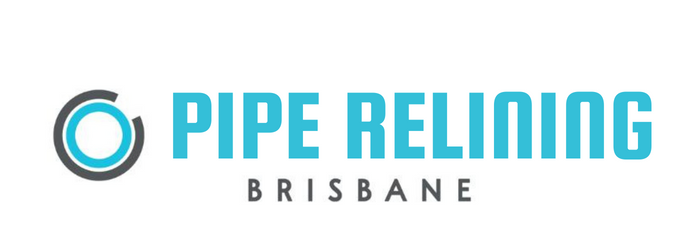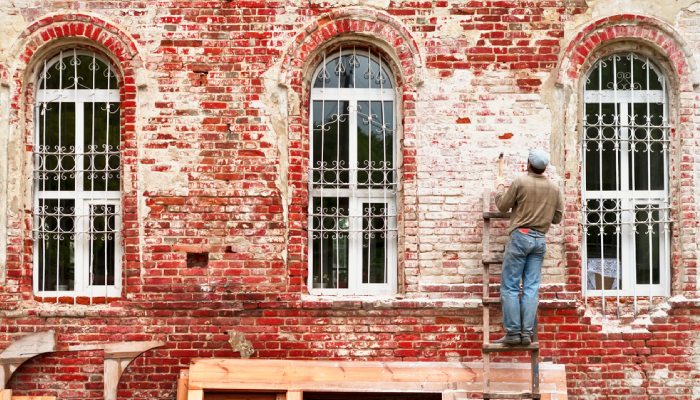Heritage buildings stand as architectural marvels, reflecting the rich tapestry of history and culture woven into their very foundations. Yet, behind the grandeur of their facades lies a complex network of plumbing systems, often concealed within the walls and floors, silently serving their inhabitants for generations. However, as time takes its toll, these aging pipes inevitably succumb to the wear and tear of years gone by, manifesting in leaks, blockages, and structural degradation.
In the pursuit of preserving these iconic structures, the role of pipe relining emerges as a modern-day solution to the challenges posed by deteriorating plumbing systems. Unlike traditional pipe repair methods that involve costly and invasive excavation to replace damaged pipes, pipe relining offers a non-destructive alternative that minimizes disruption to the building’s historical integrity.
The pipe relining process entails the insertion of a durable liner into the existing pipe, which is then inflated and cured in place, creating a seamless and long-lasting repair. This innovative approach not only addresses the immediate issues of damaged pipes but also reinforces the overall stability of the plumbing system, ensuring its continued functionality for years to come.
In the intricate dance of heritage building restoration, where every detail holds significance, the ability to reline pipes without compromising the architectural integrity is paramount. By integrating pipe relining into restoration plans, preservationists and engineers can navigate the delicate balance between modern convenience and historical authenticity, safeguarding these architectural treasures for future generations to cherish.
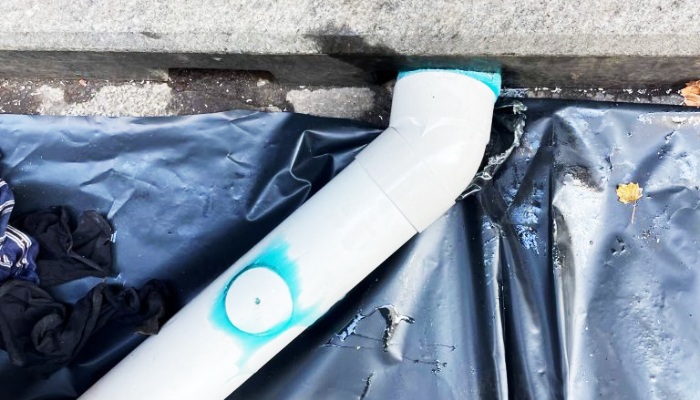
Historical Significance of Heritage Buildings and the Need for Innovative Pipe Repairs
Heritage buildings stand as testaments to bygone eras, embodying the craftsmanship and artistry of generations past. From majestic cathedrals to quaint townhouses, these architectural treasures serve as windows into history, offering glimpses of the societies and cultures that shaped them. However, nestled within the walls and beneath the floors of these venerable structures lie the lifelines of their plumbing systems, often comprising intricate networks of underground pipes.
Over time, the ravages of age take their toll on these hidden conduits, leading to a myriad of issues such as corrosion, leaks, and structural compromise. Historically, addressing such problems necessitated invasive measures, including traditional pipe replacement methods that involved extensive excavation and disruption to the building’s surroundings.
The quest for innovative pipe repairs becomes imperative in heritage building restoration. Enter pipe relining solutions, a modern approach that offers a non-invasive alternative to traditional pipe replacement. By leveraging advanced materials and techniques, pipe relining provides a tailored solution for the unique challenges posed by underground pipes in heritage buildings.
Rather than uprooting centuries-old cobblestones or disturbing the hallowed grounds of historic sites, relining solutions enable preservationists to reinforce and rehabilitate existing pipes from within. The pipe relining process involves the insertion of a flexible liner into the damaged pipe, which is then expanded and cured in place, creating a seamless and durable repair.
The role of pipe relining in heritage building restoration extends beyond mere functionality it embodies a delicate balance between preservation and progress. By embracing innovative approaches to pipe repairs, preservationists can safeguard the structural integrity of these architectural gems while honoring their storied past. In the intricate dance of restoration, where the echoes of history mingle with the whispers of progress, pipe relining emerges as a beacon of hope, ensuring that heritage buildings stand tall for generations to come.
Challenges in Restoring Plumbing Systems in Heritage Buildings
Preservation versus Modernization: Balancing Heritage Conservation with Plumbing Upgrades
While heritage buildings evoke a sense of timeless grandeur, their plumbing systems often tell a different story one of aging infrastructure and hidden complexities. Within the labyrinth of walls and floors, sewer pipes and water lines wind their way through centuries-old foundations, silently serving their purpose until time takes its toll.
The Dilemma of Traditional Repair Methods: Risks to Structural Integrity and Historical Features
Restoring these intricate plumbing systems presents a unique set of challenges for preservationists and plumbing services alike. Traditional methods of addressing pipe deterioration, such as excavation and replacement, pose significant risks to the structural integrity of heritage buildings. Moreover, the disruption caused by these invasive techniques can compromise historical features and disrupt the delicate balance of restoration efforts.
Enter Pipe Relining Solutions: Innovating Restoration Techniques for Historic Plumbing Systems
Enter pipe relining solutions a modern approach to repairing and rehabilitating aging sewer pipes and water lines. By utilizing advanced materials and techniques, pipe relining offers a non-invasive alternative that minimizes disruption while maximizing effectiveness. The process involves inserting a durable liner into the existing pipe, which is then inflated and cured in place, creating a seamless and long-lasting repair.
Restoring Structural Integrity: The Role of Pipe Relining in Preserving Heritage Plumbing Systems
Once relined, pipes regain their structural integrity, mitigating the risk of leaks, blockages, and other plumbing issues. This innovative solution not only preserves the historical fabric of heritage buildings but also ensures the continued functionality of their plumbing systems for years to come.
Navigating Restoration Challenges: Collaboration between Preservationists and Plumbing Services
In the intricate dance of heritage building restoration, the challenges of restoring plumbing systems are met with innovative pipe relining solutions. By embracing modern techniques and partnering with experienced plumbing services, preservationists can navigate the complexities of historic preservation while safeguarding the integrity of these architectural treasures. In doing so, they ensure that the stories embedded within the walls of heritage buildings continue to be told for generations to come.
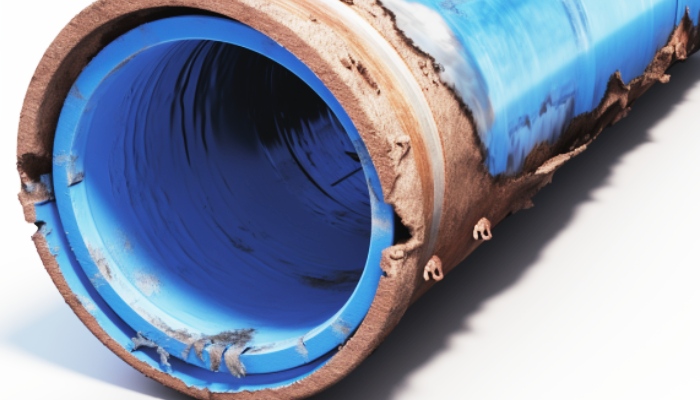
Introduction to Pipe Relining: A Trenchless Solution for Heritage Buildings
In heritage building restoration, where every brick and beam holds historical significance, the preservation of plumbing systems presents a unique challenge. Traditional methods of repairing sewer pipes, such as excavation and replacement, often pose risks to the structural integrity and aesthetic value of these architectural treasures. Enter pipe relining solutions an innovative approach that offers a trenchless alternative to traditional pipe repair methods.
Understanding Pipe Relining Solutions: A Non-Invasive Approach to Sewer Pipe Restoration
Pipe relining involves the installation of a durable liner within the existing sewer pipe, effectively creating a new pipe within the old one. This process can be conducted without the need for extensive excavation or disruption to the surrounding environment, making it particularly well-suited for heritage buildings where preservation is paramount.
The Pipe Lining Process: From Inspection to Rehabilitation
The journey of implementing a pipe relining solution begins with a comprehensive inspection of the sewer pipe using advanced technologies such as CCTV cameras. This allows preservationists and plumbing professionals to assess the extent of damage and determine the most appropriate course of action.
Once the inspection is complete, the pipe relining process can commence. First, any debris or obstructions within the pipe are cleared to ensure a smooth installation. Next, a flexible liner saturated with epoxy resin is inserted into the sewer pipe using specialized equipment. The liner is then inflated and cured in place using heat or ultraviolet light, creating a seamless and structurally sound lining within the existing pipe.
Trenchless Pipe Relining: Minimizing Disruption, Maximizing Effectiveness
Unlike traditional pipe repair methods that require excavation and replacement, trenchless pipe relining minimizes disruption to the surrounding environment, making it ideal for heritage building restoration projects. By preserving the historical integrity of the site and avoiding costly and time-consuming excavation work, trenchless pipe relining solutions offer a cost-effective and efficient way to rehabilitate aging sewer pipes.
Benefits of Pipe Relining: Ensuring Long-Term Sustainability
The benefits of pipe relining extend beyond its non-invasive nature. By creating a durable and corrosion-resistant lining within the existing sewer pipe, pipe relining solutions help to prolong the lifespan of the plumbing system, reducing the need for future repairs and maintenance. This not only preserves the structural integrity of heritage buildings but also ensures their continued functionality for generations to come.
In the intricate dance of heritage building restoration, where preservation meets innovation, pipe relining solutions emerge as a crucial tool in safeguarding the historical legacy of these architectural treasures. By embracing trenchless pipe relining techniques, preservationists and plumbing professionals can navigate the complexities of sewer pipe restoration while preserving the beauty and integrity of heritage buildings for future generations to enjoy.
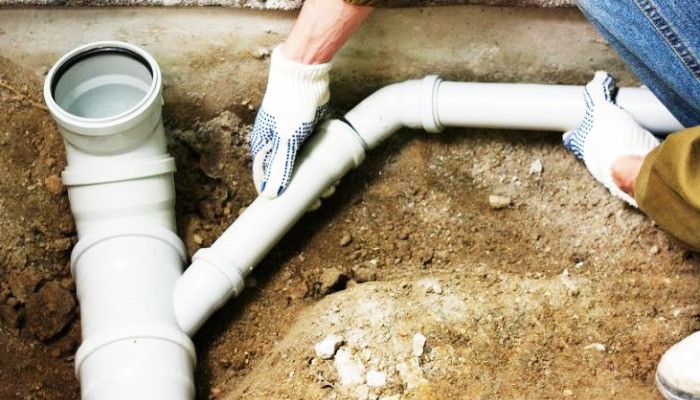
Benefits of Pipe Relining in Heritage Buildings: Preserving Original Pipes and Mitigating Corrosion
Heritage buildings, with their timeless charm and historical significance, often conceal a network of original pipes that have weathered the test of time. However, as decades pass, these pipes can fall victim to corrosion, leading to a host of issues such as blockages and leaks. In the past, addressing such issues typically involved the replacement of corroded pipes, a process that could compromise the integrity of the building’s original infrastructure.
Preservation of Original Pipes: A Key Advantage of Pipe Relining Solutions
One of the primary benefits of pipe relining in heritage buildings lies in its ability to preserve the integrity of the original pipes. Unlike pipe replacement, which involves the removal and disposal of existing pipes, pipe relining allows preservationists to retain the historic fabric of the building by reinforcing the original pipes from within.
By relining corroded pipes with a durable epoxy resin, preservationists can effectively mitigate the effects of corrosion while maintaining the architectural authenticity of the structure. This approach not only preserves the visual integrity of the building but also honors the craftsmanship of the original builders.
Mitigating Corrosion and Blockages: Addressing Common Issues with Pipe Relining
Corroded pipes are particularly susceptible to blockages and leaks, which can pose significant challenges in heritage building restoration. Unlike traditional pipe replacement methods, which may exacerbate existing corrosion issues, pipe relining offers a proactive solution for mitigating corrosion and preventing future blockages.
Through the seamless application of epoxy resin liners, pipe relining reinforces the structural integrity of corroded pipes, reducing the risk of blockages and ensuring uninterrupted flow within the plumbing system. This proactive approach not only addresses existing issues but also helps to prevent future maintenance challenges, ultimately extending the lifespan of the plumbing infrastructure in heritage buildings.
Cost-Effective and Time-Efficient Solution
In addition to preserving the original pipes and mitigating corrosion, pipe relining offers significant cost and time savings compared to traditional pipe replacement methods. By eliminating the need for extensive excavation and disruption, pipe relining minimizes labor costs and reduces the overall duration of the restoration process.
Furthermore, by avoiding the removal and replacement of existing pipes, preservationists can allocate resources more efficiently, ensuring that heritage building restoration projects remain within budget and on schedule. This cost-effective and time-efficient approach not only benefits preservationists and property owners but also minimizes disruptions to the surrounding community.
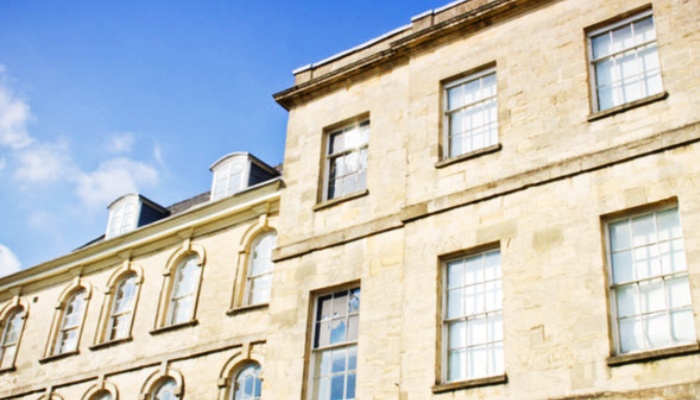
Challenges and Considerations in Pipe Relining for Heritage Buildings
Preserving the original infrastructure of heritage buildings while addressing plumbing issues presents a delicate balancing act for preservationists and restoration experts. In the context of pipe relining, several unique challenges and considerations arise, particularly when dealing with blocked drains, pipe blockages, and the intrusion of tree roots in stormwater pipes.
Preservation of Original Pipes: Balancing Heritage Conservation with Modern Restoration Techniques
One of the primary considerations in pipe relining for heritage buildings is the preservation of the original pipes. These pipes often possess historical significance and architectural value, making their retention a priority for preservationists. When faced with issues such as blocked drains or pipe blockages, preservationists must carefully weigh the benefits of pipe relining against the potential impact on the original infrastructure.
Addressing Blocked Drains and Pipe Blockages: Proactive Solutions for Heritage Plumbing Systems
Blocked drains and pipe blockages can pose significant challenges in heritage building restoration, disrupting the flow of water and potentially causing water damage to the structure. In many cases, these issues are exacerbated by the intrusion of tree roots in stormwater pipes, a common problem in older plumbing systems.
Pipe relining offers a proactive solution for addressing blocked drains and pipe blockages in heritage buildings. By reinforcing existing pipes with a durable epoxy resin liner, preservationists can effectively mitigate the risk of blockages caused by tree roots and other debris. This approach not only restores the flow of water within the plumbing system but also helps to prevent future maintenance issues.
Considerations for Stormwater Pipes: Minimizing the Impact of Tree Root Intrusion
Stormwater pipes, in particular, are susceptible to tree root intrusion, which can lead to blockages and structural damage. When relining stormwater pipes in heritage buildings, preservationists must take into account the potential impact of tree roots on the integrity of the plumbing system.
By conducting thorough inspections and implementing proactive measures such as root barriers, preservationists can minimize the risk of tree root intrusion in stormwater pipes. Additionally, choosing appropriate relining materials and techniques can help to reinforce the structural integrity of stormwater pipes, ensuring their long-term functionality and resilience.
In the intricate dance of heritage building restoration, addressing plumbing issues requires careful consideration of the unique challenges posed by blocked drains, pipe blockages, and tree root intrusion. By embracing proactive solutions such as pipe relining and incorporating measures to preserve the original infrastructure, preservationists can navigate these challenges while safeguarding the historical integrity of heritage buildings for future generations.
Integration with Overall Restoration Plans
In the meticulous process of restoring heritage buildings, every aspect must harmonize to preserve their historical authenticity while addressing necessary repairs. When it comes to plumbing, the integration of pipe relining work into overall restoration plans is crucial to ensure minimal disruption to the building’s structure and historical features.
Preservationists and restoration experts recognize the significance of preserving original pipes, acknowledging them as integral components of the building’s heritage. However, when faced with issues such as blocked drains or deteriorating pipes, the need for repair becomes inevitable. This is where pipe relining emerges as a valuable solution, offering a way to reinforce and rehabilitate existing pipes without compromising their historical integrity.
By seamlessly integrating pipe relining work into overall restoration plans, preservationists can minimize disruption to the building’s occupants and surrounding environment. Unlike traditional pipe repair methods that may require extensive excavation and disruption, pipe relining offers a non-invasive alternative that can be conducted with minimal disturbance.
Incorporating modern techniques such as high-pressure water jetting for pipe cleaning further enhances the effectiveness of pipe relining, ensuring that the rehabilitated plumbing system meets the highest standards of functionality and durability. This proactive approach not only addresses existing plumbing issues but also helps to prevent future maintenance challenges, prolonging the lifespan of the building’s infrastructure.
In essence, the integration of pipe relining into overall restoration plans exemplifies the delicate balance between preservation and progress. By embracing innovative solutions while respecting the historical significance of heritage buildings, preservationists can ensure that these architectural treasures continue to stand the test of time, inspiring admiration and reverence for generations to come.

Future Trends and Innovations in Plumbing Solutions
As the preservation of heritage buildings evolves alongside advancements in technology and restoration techniques, the future of plumbing solutions holds promise for continued preservation and sustainability. Among these innovations, the choice of pipe relining emerges as a forward-thinking approach to addressing the challenges posed by leaking pipes and deteriorating drainage systems.
Embracing Sustainable Plumbing Solutions: The Shift Towards Pipe Relining
In an era marked by increasing environmental consciousness, the demand for sustainable plumbing solutions has never been greater. Preservationists and restoration experts are turning to pipe relining as a viable alternative to traditional pipe repair methods, recognizing its potential to minimize waste and reduce environmental impact.
By choosing pipe relining over conventional pipe replacement, preservationists can significantly reduce the amount of materials discarded during restoration projects. This not only aligns with principles of sustainability but also helps to preserve the original character of heritage buildings by retaining their historic infrastructure.
The Importance of Selecting the Right Pipe Relining Solution
As the popularity of pipe relining continues to grow, the market offers a plethora of options for restoration professionals to choose from. From epoxy resin liners to cured-in-place pipes, selecting the right relining solution is crucial to ensuring the long-term integrity and functionality of the plumbing system.
Preservationists must consider factors such as the material compatibility with existing pipes, the severity of damage, and the expected lifespan of the relining solution when choosing a pipe relining method. By partnering with experienced plumbing professionals and conducting thorough assessments of the plumbing system, preservationists can make informed decisions that align with the preservation goals of heritage building restoration projects.
Advancements in Drainage Systems: Enhancing Performance and Efficiency
Beyond pipe relining, future trends in plumbing solutions also include advancements in drainage systems aimed at enhancing performance and efficiency. From innovative stormwater management techniques to sustainable drainage infrastructure, preservationists are exploring new avenues to improve the resilience of heritage buildings against water-related issues.
Conclusion: Sustaining the Legacy of Heritage Buildings through Pipe Relining
In the intricate tapestry of heritage building restoration, where the threads of history are interwoven with the fabric of modern innovation, the role of pipe relining emerges as a beacon of preservation and progress. Throughout this journey, we have explored the challenges and complexities of restoring plumbing systems in heritage buildings and the transformative impact of pipe relining solutions.
From the preservation of original pipes to the mitigation of corrosion and blockages, pipe relining offers a proactive and sustainable approach to addressing the unique challenges posed by aging infrastructure. By seamlessly integrating pipe relining work into overall restoration plans, preservationists can uphold the historical authenticity of heritage buildings while ensuring their continued functionality for generations to come.
As we look to the future, the adoption of sustainable plumbing solutions and advancements in drainage systems hold promise for further enhancing the resilience of heritage buildings against water-related issues. By embracing these innovations and incorporating them into preservation efforts, we can sustain the legacy of these architectural treasures, allowing them to stand as testaments to the ingenuity and craftsmanship of generations past.
In the delicate dance of heritage building restoration, where the echoes of history mingle with the whispers of progress, pipe relining serves as a bridge between the past and the future. By preserving the structural integrity of heritage buildings and safeguarding their plumbing systems through innovative solutions, we honor the stories embedded within their walls and ensure that their legacy endures for generations to come.
